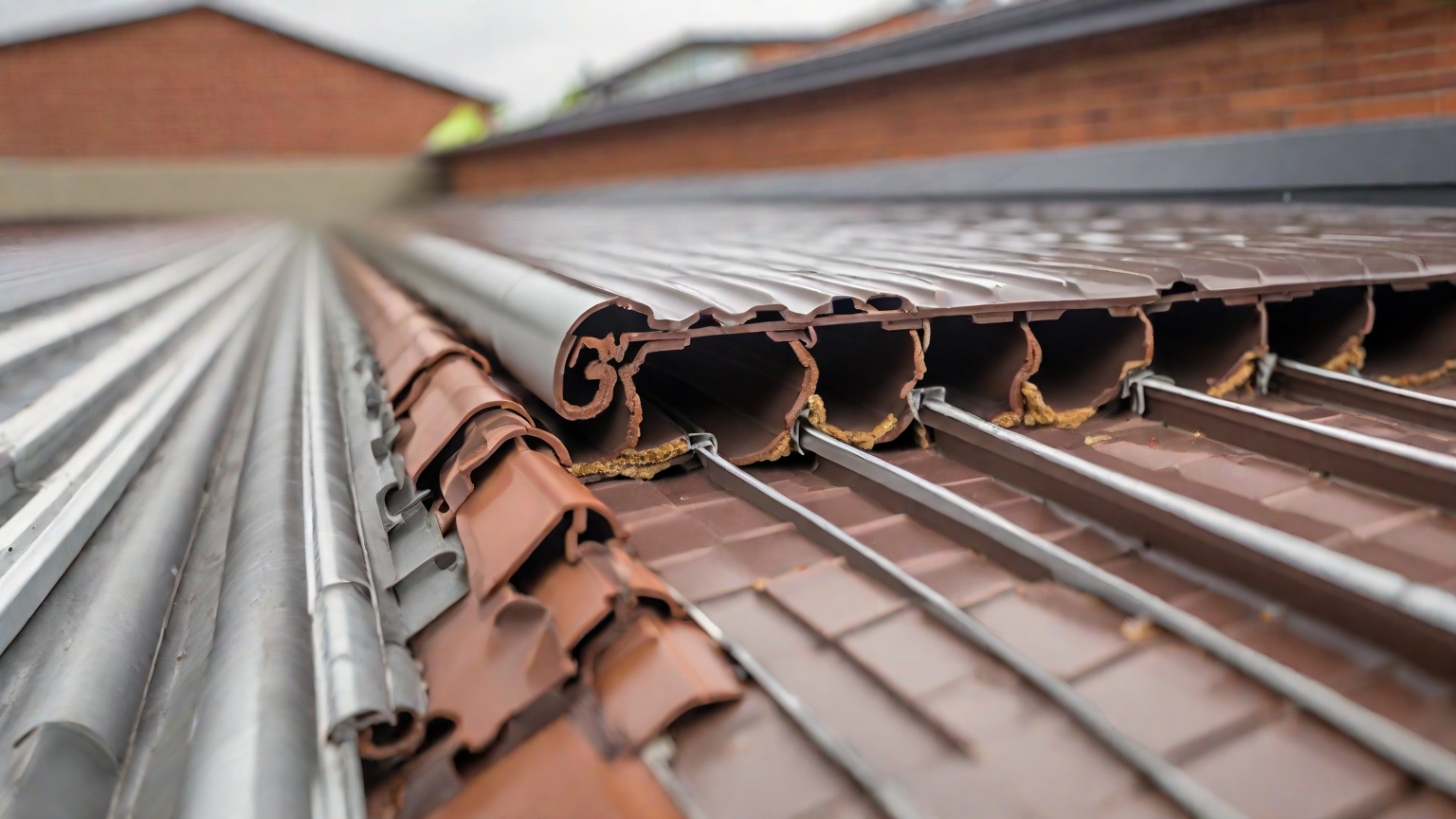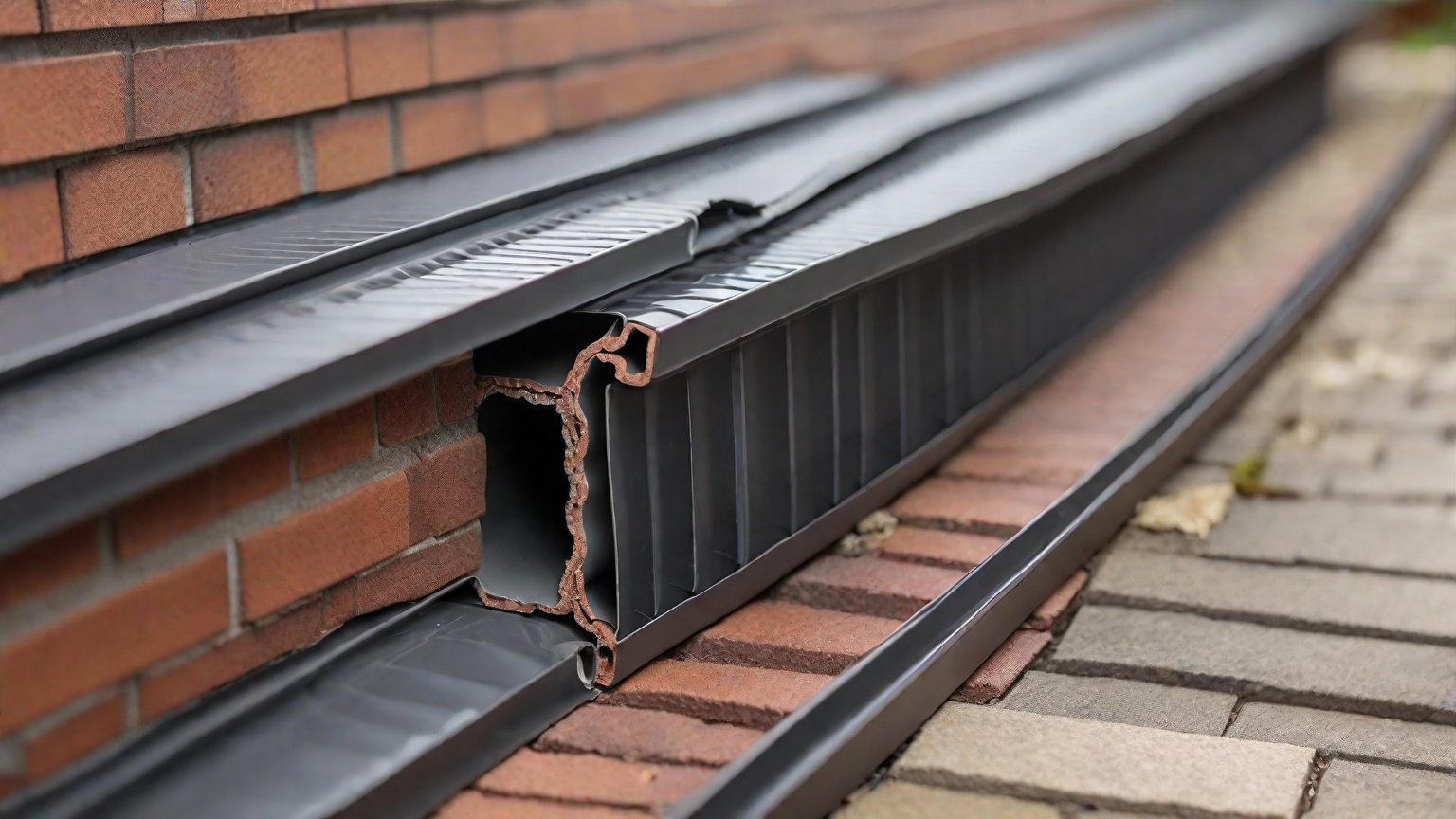The Importance of Gutter Expansion Joints: Types, Installation, and Maintenance
Gutters play a vital role in protecting our homes from water damage. They efficiently channel rainwater away from the roof and foundation, preventing structural issues and potential costly repairs. However, many homeowners overlook a crucial component of gutter systems: expansion joints. In this blog post, we will explore the significance of gutter expansion joints, the different types available, installation and maintenance tips, as well as common problems and solutions.
Gutter expansion joints are specifically designed to accommodate the natural expansion and contraction of gutters due to temperature changes. They help prevent damage to the gutter system, preserve the structural integrity of your home, and prevent water leakage and overflow. By understanding the importance of gutter expansion joints, you can ensure the longevity and effectiveness of your gutter system.

The Importance of Gutter Expansion Joints
Preventing Gutter Damage
Without expansion joints, gutters are at risk of becoming stressed and damaged. The continuous expansion and contraction caused by temperature fluctuations can lead to cracks, warping, and even detachment from the fascia. Expansion joints act as a buffer, absorbing the stress and protecting the gutters from potential damage.
Preserving Structural Integrity
Excessive stress on gutters can have a ripple effect on the entire structure of your home. Without expansion joints, the continuous movement of the gutters can lead to damage to the fascia, soffit, and even the foundation. By installing expansion joints, you can preserve the structural integrity of your home and avoid costly repairs in the long run.
Avoiding Water Leakage and Overflow
Gutter expansion joints are essential for maintaining proper water flow and preventing leakage and overflow. When gutters are unable to expand and contract freely, water can accumulate, leading to blockages and potential water damage. Expansion joints ensure a smooth and efficient flow of water, minimizing the risk of leaks and overflow.
Different Types of Gutter Expansion Joints
There are several types of gutter expansion joints available, each offering unique benefits and considerations. The most common types include:
Sectional Expansion Joints
Sectional expansion joints consist of separate sections that are joined together with connectors. They are relatively easy to install and provide flexibility to accommodate gutter movements. Sectional expansion joints are a popular choice for DIY enthusiasts due to their simplicity and cost-effectiveness.
Continuous Expansion Joints
Continuous expansion joints, also known as roll-formed or seamless expansion joints, offer a sleek and seamless appearance. They are made from a continuous piece of material and provide excellent durability and resistance to leaks. Continuous expansion joints are often preferred by professional builders and roofing contractors due to their longevity and aesthetic appeal.
Flexible Expansion Joints
Flexible expansion joints are designed to provide maximum flexibility, allowing for significant movement of the gutters. They are typically made from rubber or flexible materials that can withstand extreme temperature changes. Flexible expansion joints are an excellent option for areas with extreme weather conditions or when significant expansion and contraction are expected.
Installation and Maintenance of Gutter Expansion Joints
Proper installation and regular maintenance are crucial for the effectiveness of gutter expansion joints. Here are some essential tips to keep in mind:
Step-by-step guide for installation:
- Start by measuring and marking the locations for the expansion joints along the gutter system.
- Securely attach the expansion joints according to the manufacturer’s instructions.
- Ensure proper alignment and secure all connections.
- Test the gutter system by running water through it to check for any leaks or abnormalities.
Tips for proper maintenance:
- Regularly inspect the gutter system, including the expansion joints, for any signs of damage, blockages, or misalignment.
- Clean the gutters and remove any debris that may accumulate and obstruct water flow.
- Check for signs of corrosion, rust, or wear and replace any damaged or worn-out expansion joints promptly.
- Schedule routine maintenance to ensure the overall health and functionality of your gutter system.

Common Problems and Solutions
Joint Separation and Misalignment
Over time, expansion joints may experience separation or misalignment due to constant movement. To address this issue, inspect the gutters regularly and reposition or reattach any loose or misaligned expansion joints. If the problem persists, consult a professional for assistance.
Debris Accumulation
Gutters and expansion joints can become clogged with leaves, twigs, and other debris, obstructing water flow. Regular cleaning and maintenance will help prevent debris accumulation. Consider installing gutter guards or screens to minimize debris build-up.
Corrosion and Rust Issues
Exposure to moisture and the elements can lead to corrosion and rust on gutter systems, including expansion joints. Regularly check for signs of corrosion and rust, and replace any affected components. Applying a protective coating or paint can help prevent future corrosion.
Repair and Replacement Solutions
If your gutter expansion joints are damaged beyond repair, it’s important to replace them promptly to maintain the integrity of your gutter system. Consult a professional for guidance on choosing the right replacement joints and ensuring proper installation.
Gutter expansion joints are a vital component of a well-functioning gutter system. They protect your home from damage, preserve its structural integrity, and prevent water leakage and overflow. By understanding the importance of gutter expansion joints and following proper installation and maintenance practices, you can ensure the longevity and effectiveness of your gutter system.
Remember, regular inspection, cleaning, and maintenance are key to keeping your gutter system in optimal condition. If you’re experiencing issues or need professional assistance, don’t hesitate to seek guidance from roofing contractors or professional builders.
For more DIY guides and helpful tips, be sure to check out our other blog posts. Together, let’s keep our homes protected and our gutters flowing smoothly.



